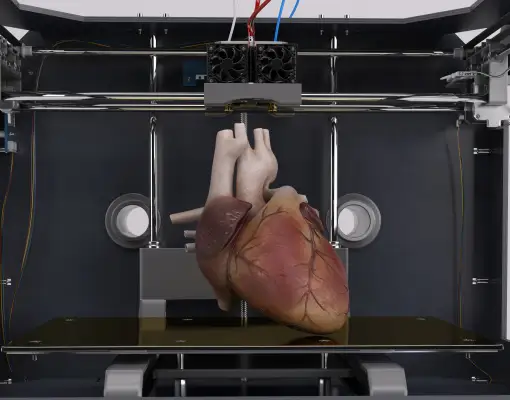
One of the most remarkable aspects of 3D printing in the medical field is its capacity to create customized implants. These implants, tailored to individual patient anatomies, offer a level of precision and comfort that was previously unattainable:
Orthopedic Implants: 3D-printed joints fit the patient's unique anatomy perfectly, significantly reducing the risk of complications and post-surgical discomfort.
Dental Prosthetics: Dental procedures have benefited immensely from 3D printing, with onstruction highlighting the creation of dental prosthetics. These custom prosthetic solutions not only enhance aesthetics but also improve oral function, ultimately leading to a higher quality of life for patients.
In the medical industry, 3D printing has quietly but dramatically transformed the landscape of patient care and healthcare practices.
Read More

Anatomical Models: Surgeons now have access to highly detailed, 3D-printed anatomical models that precisely replicate a patient's unique anatomy. This enables them to thoroughly plan complex surgeries, rehearse procedures, and navigate challenges with greater confidence.
Tissue Models for Drug Testing: In the medical industry, 3D printing's capabilities have propelled the creation of 3D-printed tissue models for drug testing. These models closely mimic human physiology, allowing researchers to accelerate drug development while reducing the reliance on traditional animal testing methods.


3D printing's contribution to innovations in prosthetics and the emerging field of biofabrication:
Prosthetic Limbs: 3D printing enables continuous innovation in prosthetics, allowing for the adaptation and improvement of prosthetic limbs, ultimately enhancing the mobility and quality of life of users.
Biofabrication of Organs: The medical industry is witnessing groundbreaking progress in the biofabrication of organs and tissues, providing hope for patients in need of transplants.
In conclusion, 3D printing in the medical industry is reshaping patient care, surgical practices, pharmaceutical research, and healthcare professionals' capabilities. Its ability to customize solutions and enhance precision underscores its importance in advancing healthcare and improving the quality of life for patients. As this technology continues to evolve, its potential contributions to the medical field remain promising and boundless.